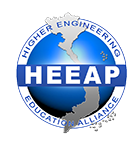Dr. Jim Collofello of Arizona State University’s Ira A. Fulton Schools of Engineering conducted a week-long interactive workshop in HEEAP active learning techniques to faculty at Vietnam’s Ho Chi Minh City University of Technology (HCMUT) in September.
Dr. Collofello, who teaches courses in computer science and engineering at ASU, discussed and demonstrated group and teamwork teaching techniques - the basis of the active learning instructional method.
Collofello, who also serves as associate dean of Academic and Student Affairs, said the aim of the workshop was to demonstrate how to get students more engaged beyond traditional lecture through group-oriented activities. One technique suggested calling on students at the end of class to identify the “muddiest point” of the lecture, where the professor would ask students to identify something that might be still confusing, or “muddy,” to them.
Active learning directly involves student engagement in the instructional process, with group-based activities such as reading, writing, discussing and problem solving.
“I was very impressed by their enthusiasm,” said Dr. Collofello of the HCMUT faculty. “They were very eager to try to apply the techniques [to their classrooms].”
Dr. Trung Kien Pham, one of the HCMUT professors who attended the workshop, said the team puzzle game method he learned that required all team members to think and find a collective solution was “good for brainstorming.” He has since implemented the learning technique into his classroom, noting “students pay more attention to the lecture since the game challenges their thinking.” At the end of each class, Dr. Kien gives his students time for “short talks” of “two to three minutes” to exercise their brain to respond to short questions he hands out based on lecture.
Meanwhile, Dr. Doan Van Hong Thien took away a curated approach from the workshop, tailoring how he teaches to course content and student needs. “I think other professors at my university should implement these active learning practices,” he said. “However, it is necessary to review course contents and consider the abilities of students before applying teaching techniques to courses.”
Dr. Ngo Dung, who had previously attended a HEEAP program in the U.S., served as a Teaching Assistant to Dr. Collofello, where he helped the new faculty form a deeper understanding and application of the teaching techniques and served as a language liaison.
As an engineering professor himself, Dr. Dung has applied active learning successfully in his classroom. “Students are able to memorize much more [with active learning methods] than with what we have taught in a semester [with old teaching methods],” he said. “Instead of giving out the lengthy lectures in class, I urge the students to read at home by giving them some questions and objectives. Then, in class, we just discuss in group to solve the problems. If there are some hitches, I can explain more in theory lead them to the solutions.”
At the end of the workshop, HCMUT faculty learned that not only would active learning teaching methods benefit and prepare their students for a professional engineering career, but that it would help them to be more efficient instructors. “These very simple techniques faculty can use without spending a lot of class time, yet challenging the students to achieve a deeper form of learning at the same time,” Collofello said.

